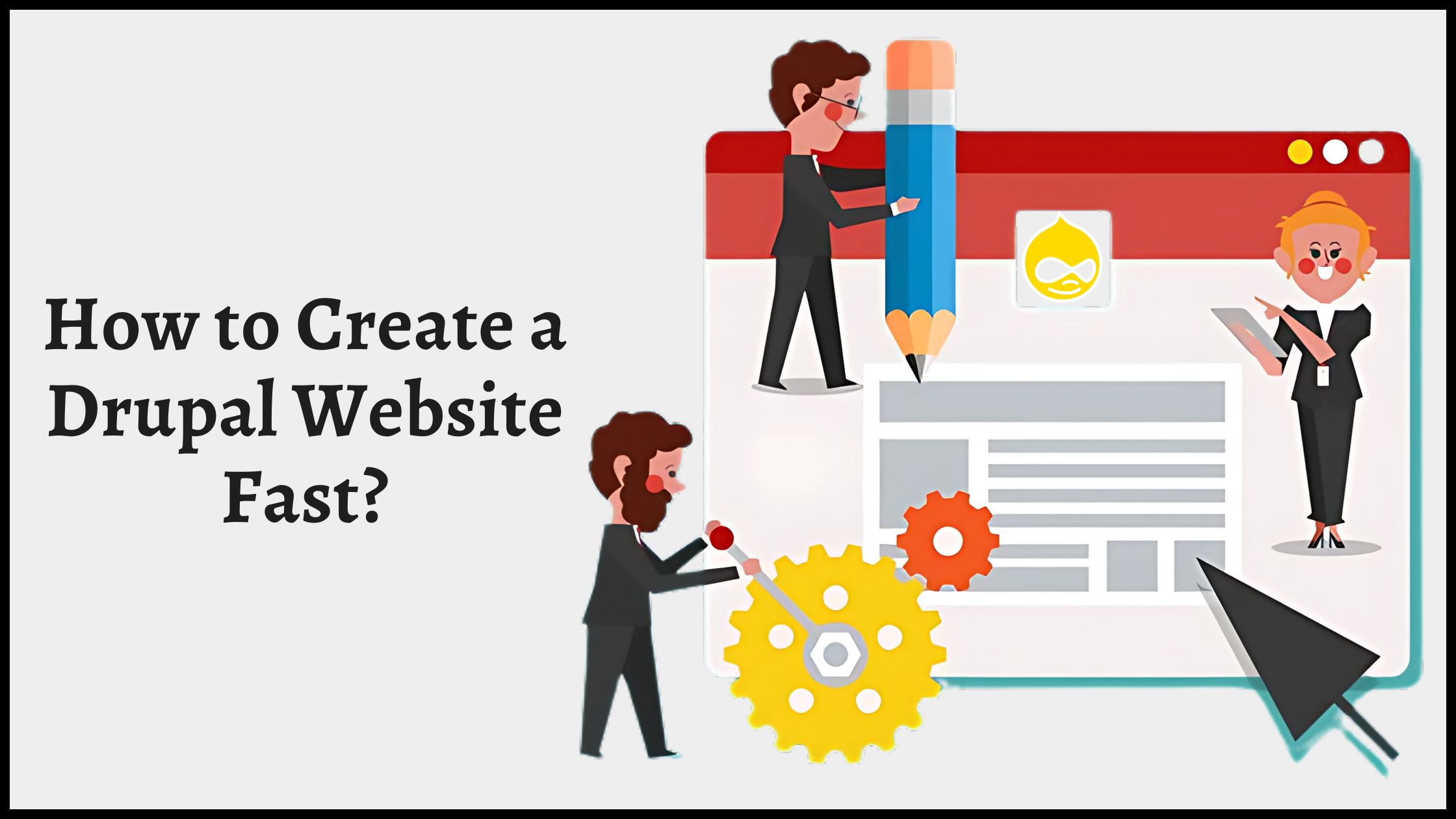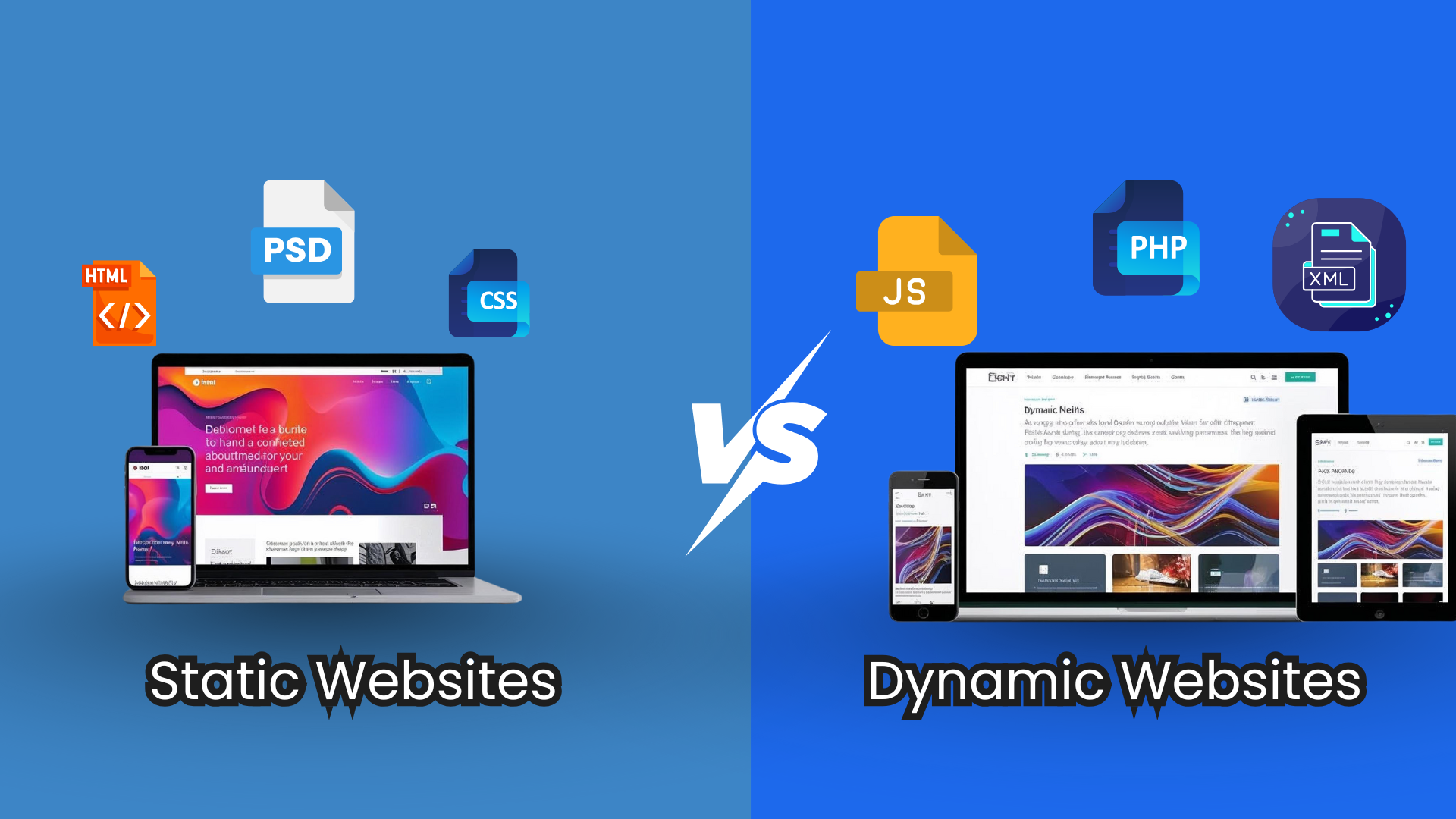- What is Drupal Used For?
- Advantages of Using Drupal
- Step-by-Step Process of Drupal Website Development
- Step 1: Pre-development Planning
- Step 2: Choosing the Right Drupal Version and Hosting
- Step 3: Designing Your Drupal Site
- Step 4: Building Drupal Web Development Core Features
- Step 5: Optimize Your Drupal Site for Performance and SEO
- Step 6: Set-Up Enterprise-level Protection
- Step 7: Post-launch Testing
- Step 8: Launch and Maintain
- Getting Started With CSSChopper for Drupal Web Development
Content management systems are the first touchpoint for most users and businesses looking to formulate a digital presence. As the market evolves, CMSs that offer potent tools, flexibility, enterprise-grade security, and optimized workflows are needed to improve user journeys throughout the website. Drupal comprises all the essential features that have led to its usage by over 4 lakh website owners worldwide.
It is a free and power-packed content management system that empowers the ones using it to build a not-like other’s web presence. Businesses operating under various niches are using this platform. Moreover, it powers almost 2000 government websites because of its excellent performance, top-grade security, and ability to handle excessive traffic.
Now, the question is how you can create a web experience like never before with Drupal. The answer lies in the website development process and your decisions. However, if you are unfamiliar with the platform, opting for Drupal web development services can help. The experts can assist you in establishing the online presence that you have envisioned.
What is Drupal Used For?
Drupal was launched in 2001, and it has improved significantly since then. The platform is free to build and maintain websites, web directories, online stores, and various other types of online presence. Groups of users or individuals can use it. This is popular because of its extensive features and capabilities, which make it suitable for building simple to highly complex websites.
Drupal 11.0.5 is the latest version of this platform, which comes with various enhancements, including improved workflow, risk reduction, higher flexibility, simplified content modeling, and more. This upgrade is one of the notable steps in enhancing Drupal’s functions and uplifting its blurred image among users.
-
What Makes Drupal Unique For?
Drupal has come a long way and has served various individuals and businesses thus far. It works on an API-first approach. This enables seamless integration of Drupal with other systems and applications, which helps make it a versatile platform. Plus, the platform is not just accessible and multilingual but can also grow as your business grows. Additionally, you can build a highly flexible website on this platform that precisely meets your needs. All in all, this makes Drupal a suitable CMS for building a highly flexible web presence.
-
Drupal Web Development is Suitable for What Kind of Sites?
You might be wondering what type of sites you can build with the power of Drupal. This platform is an open-source content management system which you can use to build sites like:
- Personal or Business Sites
- eCommerce Websites
- News and Blogs Sites
- Forums
- Social Networking Platforms
- Portfolio-based Sites
- Entertainment and Media Platforms
- NGO Sites
- Government Websites
These are some examples of sites that can be built using the potential of Drupal. The subtle nuance lies in professionalism if you want to attain a better presence on the web. Therefore, hiring a Drupal CMS development company is invaluable here. Experts can guide you and help you turn your idea into a full-fledged working website the way you want.
Advantages of Using Drupal
After several updates and improvements in Drupal, it has been consistently named among the finest content management systems to power your web presence. Here are some of the many benefits this platform offers.
1. Highly Flexible
Drupal is one of the CMSs that offers top-level flexibility to users compared to other content management systems. It allows one to use it to build a web presence the way he wants. This means whether you are using it to create an eCommerce site, news portal, social network, forum, or any other, it just depends on your project needs and how you complete it. The only limitation here is your imagination. The limitation can be solved if you work with Drupal developers. Their expertise can assist you in overcoming the barrier of what you are thinking and how you want your solution to look like.
2. Top-tier Security
The platform has a strong reputation for offering robust security measures, making it one of the top choices for security-focused web development. It has various built-in security features, like database encryption, CSRF, and two-factor authentication. Also, you never have to wait for the latest security patch or new functions because updates come quickly in Drupal. Moreover, a dedicated team of Drupal experts removes security-related vulnerabilities, keeping the platform safe and sound.
3. Composable Architecture
Drupal is not only a content management system but also a content management framework. Its modular design also makes it highly flexible. Modular software consists of code chunks with systematized interfaces, which can be reorganized and reused to quickly formulate web solutions. The modularity concept benefits every business type but majorly helps enterprise-based businesses, and Drupal can resolve this. It works on a composable architecture that powers greater flexibility for a business while creating a web solution. One only needs to combine the right modules, and the output will be completed.
4. Great for Traffic Handling
Scalability is a concern for businesses that do not use the power of Drupal. This CMS is known for its ability to formulate scalable web solutions. The platform is optimized for a wide range of caching modules that can help improve page load speed and optimize bandwidth, ultimately making Drupal-based solutions capable of handling high traffic.
5. Multilingual Management
You can create a website on Drupal that offers multilingual capabilities and effectively serves your global audience. Now, users of different countries speaking different languages can quickly grasp the information you are trying to share with them. This can reduce bounce rates and increase the retention ratio of users. Hence, it is important to utilize most of it in Drupal web development to easily target different markets and improve engagement (and profit).
Step-by-Step Process of Drupal Website Development
Drupal is one of the preferred CMSs for developing websites because of its outstanding features and benefits. Perfect planning can set the tone, but you must ensure you have the expertise to complete the development process.
Here is a detailed plan covering each step of Drupal site development.
Step 1: Pre-development Planning
Before starting the development process, framing the right strategies is essential. You should begin the development process with a clear action plan covering “what, when, and how you can do it.” Also, cover your business goals, which include the following.
- What features do you want on your site?
- Which development mode do you prefer?
- How scalable do you want your website to be?
Moreover, while covering the business goals, focus on including functional, non-functional, technical, and project-specific details for a more comprehensive plan. Furthermore, you can conduct a competitor analysis to ensure where your competing business is lacking and what you can include to achieve more limelight.
Step 2: Choosing the Right Drupal Version and Hosting
Once you have prepared a foolproof action plan, the next step is to select the correct version of Drupal and install it. You must choose the latest version of this platform (11.0.5), as it comes with some serious improvements that can help you achieve what your business goals. With that, you must pick the right domain and host for Drupal web development. Whether you prefer IaaS, On-Premise, PaaS, or SaaS hosting, this entirely depends on your needs, performance, and budget.
Now, install Drupal from its official website, after which the major technical work starts. Add usernames and roles and perform basic site settings (site name, slogan, administrative email, and more) to ensure your site is ready for the next steps.
Step 3: Designing Your Drupal Site
The actual work starts at this step. You can select a pre-made theme or opt for custom theme development, depending on your budget. If you choose a theme created by an offshore expert, you can modify it somewhat because the control is limited. You will get what you want if you opt for custom theme development. The subtle nuance lies in expertise. It would be great if you could hire Drupal developers for this.
However, while selecting a pre-made theme or in custom development, giving major credit to mobile-friendly design is invaluable because of the increasing number of users.
Also, effectively customize the menu/mega menu (if any), choose the right place for CTAs, and ensure the design consistency throughout the theme to make a solid impression among visitors. Moreover, implementing navigation best practices is crucial to ensure a frictionless journey for users.
Step 4: Building Drupal Web Development Core Features
After selecting a theme for your website, it becomes crucial to build the core features. You must determine the essential functionalities your site needs, including user registration and management. You can evaluate your site’s navigation by creating a custom one under Structure > Menus.
This helps users easily navigate your website and the content you have included. Depending on your site’s requirements, enabling essential (core and contributed) modules is necessary to provide additional functionality to your site.
To configure and implement modules for better functionality, you need to identify what functionality you require, find the module that matches it similarly from the Drupal repository, install and enable it, and then access its configuration settings to tailor them according to your business needs.
Step 5: Optimize Your Drupal Site for Performance and SEO
Performance is crucial, and you need to focus on this aspect to achieve better search engine visibility. In Drupal web development, you can implement various techniques, like caching, image optimization, minifying CSS and JS files, lazy loading for images and content, and database optimization, which can translate to better performance for your Drupal site.
Also, emphasize improving your site’s server performance. This can help your site handle high-traffic tides. Moreover, include preferred search engine features to ensure your website is accessible to search engines. Furthermore, you can use techniques like content optimization, creating an XML sitemap, optimizing meta tags, and other practices to attain better web rankings.
Step 6: Set-Up Enterprise-level Protection
Security is pivotal. Every 39 seconds, a new cyberattack occurs anywhere in the world. If you miss this crucial step, then whatever steps you have taken will be undone. Protection is as important as creating a web presence. Drupal is a content management system that is among the top because of its security. You must leverage the full potential of this platform, and if you are not accustomed to it, then working with web developers can be of great help.
The experts can take advantage of security’s best features, like security plugins, 2-factor authentication, and implementing firewalls and intrusion detection systems, to safeguard your web solution against potential security vulnerabilities. Moreover, they can monitor and review access logs to ensure any suspicious activity is not present and, if found, take appropriate action to remove it.
Step 7: Post-launch Testing
Testing is crucial to ensuring the appropriateness of your integration and development efforts thus far. The expert team you hire will help you complete this process more optimally. They will perform in-depth testing, including browser compatibility, responsive design testing, accessibility, usability, and load testing, to ensure your site performs well. This step will fix all the bugs, glitches, or code errors left during Drupal web development.
Step 8: Launch and Maintain
Drupal developers will launch your site to reach the audience you’ve created. However, thinking your website will remain bug and error-free without proper maintenance is futile. Maintenance is pivotal in keeping a web solution healthy for years and helps maintain a credible presence among users. Ensure that the team you hire will provide budgetary website maintenance services. Also, web maintenance can help you monitor your site’s performance and track key metrics (conversion, traffic, and leads).
Getting Started With CSSChopper for Drupal Web Development
All you need to complete Drupal development is an expert company that can help you throughout the process. CSSChopper, an esteemed Drupal CMS development company, can help you throughout the process. Our team of skilled Drupal experts has extensive experience with the platform and stays updated with the latest developments.
Our team has completed over 25+ projects on Drupal for different business verticals, containing diverse sets of specific features. Whether you want to build a brand new website, enhance an existing one, or integrate Drupal with other systems, our team has the experience and expertise to bring your vision to life.
Categories
Recent Posts
Popular Posts
- How to Choose a Reliable Offshore Development Partner?
- Transforming Web Development with HTMX’s Declarative Approach for Dynamic UIs
- Why Your Conversion Funnel Needs a Composable Commerce Solution?
- How to Outsource Web Development in 2025: Complete Guide
- What are the Top Web Development Trends for 2025?




